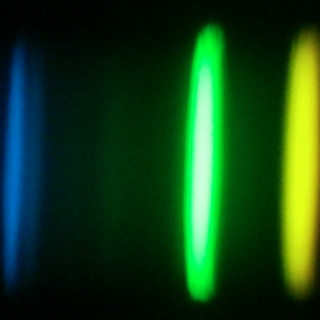Bertran de Lis, S.; Allende Prieto, Carlos; Ludwig, H. -G.; Koesterke, L.
Referencia bibliográfica
Astronomy and Astrophysics
Fecha de publicación:
5
2022
Revista
Número de citas
7
Número de citas referidas
6
Descripción
Context. The use of 3D hydrodynamical simulations of stellar surface convection for model atmospheres is computationally expensive. Although these models have been available for quite some time, their use is limited because of the lack of extensive grids of simulations and associated spectra.
Aims: Our goal is to provide a method to interpolate spectra that can be applied to both 1D and 3D models, and implement it in a code available to the community. This tool will enable the routine use of 3D model atmospheres in the analysis of stellar spectra.
Methods: We have developed a code that makes use of radial basis functions to interpolate the spectra included in the CIFIST grid of 84 three-dimensional model atmospheres. Spectral synthesis on the hydrodynamical simulations was previously performed with the code ASSϵT.
Results: We make a tool for the interpolation of 3D spectra available to the community. The code provides interpolated spectra and interpolation errors for a given wavelength interval, and a combination of effective temperature, surface gravity, and metallicity. In addition, it optionally provides graphical representations of the RMS and mean ratio between 1D and 3D spectra, and maps of the errors in the interpolated spectra across the parameter space.
Aims: Our goal is to provide a method to interpolate spectra that can be applied to both 1D and 3D models, and implement it in a code available to the community. This tool will enable the routine use of 3D model atmospheres in the analysis of stellar spectra.
Methods: We have developed a code that makes use of radial basis functions to interpolate the spectra included in the CIFIST grid of 84 three-dimensional model atmospheres. Spectral synthesis on the hydrodynamical simulations was previously performed with the code ASSϵT.
Results: We make a tool for the interpolation of 3D spectra available to the community. The code provides interpolated spectra and interpolation errors for a given wavelength interval, and a combination of effective temperature, surface gravity, and metallicity. In addition, it optionally provides graphical representations of the RMS and mean ratio between 1D and 3D spectra, and maps of the errors in the interpolated spectra across the parameter space.
Proyectos relacionados

Abundancias Químicas en Estrellas
La espectroscopía de estrellas nos permite determinar las propiedades y composiciones químicas de las mismas. A partir de esta información para estrellas de diferente edad en la Vía Láctea es posible reconstruir la evolución química de la Galaxia, así como el origen de los elementos más pesados que el boro, forjados principalmente en los interiores
Carlos
Allende Prieto